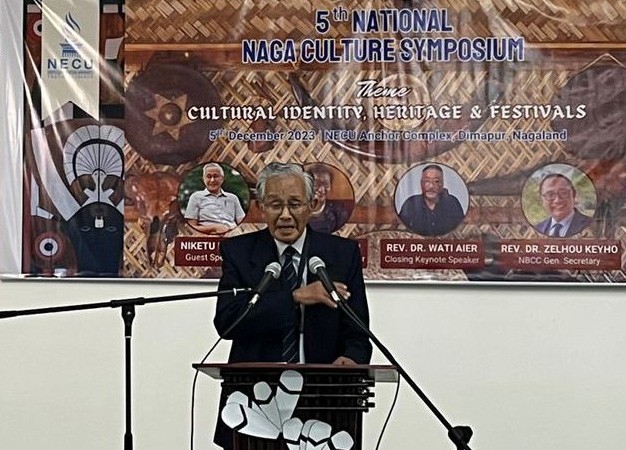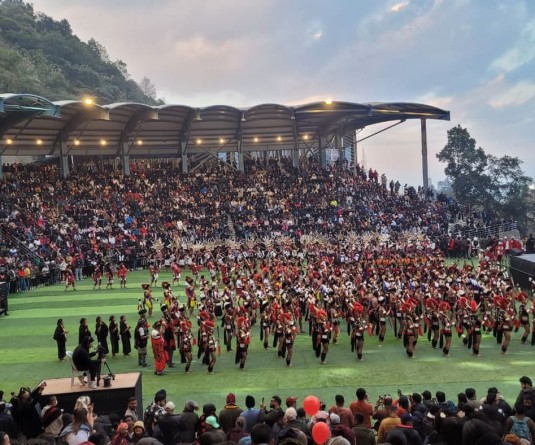Niketu Iralu speaking during the 5th National Naga Culture Symposium at NECU on December 5. (Morung Photo)

5th National Naga Culture Symposium held
Morung Express News
Dimapur | December 5
As the consensus is that while this year’s Hornbill festival has proved itself to be a vast improvement from all previous editions, Naga peace activist, Niketu Iralu reminded of the need to be aware of “what the unseen, unheard vast majority of our people especially in the distant periphery of our Eastern border are seeing in what we are celebrating.” He went on say that, “It is clear what others are seeing in the Kohima and Dimapur region of our State during this festival is spectacular.”
However, unless urgent action is taken to readdress the grievances of each other, bitterness the resentment and the distrust we are creating within our Naga family can undo what we are attempting to achieve, he viewed.
Iralu was speaking during the 5th National Naga Culture Symposium commences at North East Christian University (NECU), Burma Dimapur on December 5, held as a complimentary event to the Hornbill festival.
As a growing young society which had only recently come out into the modern era, he stated that it was important ‘to know ourselves,’ and where strengths and weaknesses lie of each other. “We are not more than what we are” but at the same time, “not less than what we are.”
To this, he mentioned that while visiting foreign dignitaries at Kisama will convey of all the vast potential the State holds, it was also pertinent for the Naga people to be aware of the socio-political upheavals of its chequered history. For which a proper growth in all spheres of society, without neglecting or overlooking any one particular group was required when moving forward, he said.
Professor Darlando Kathing, Vice Chancellor of NECU meanwhile explained that the event was an attempt to provide a semi-academic understanding of Nagas beyond the dancing and merry making during the Hornbill festival.
No doubt “it is a very great and grand affair (Hornbill) but, “how about we let people know of the actual lives of the Naga people, their way of thinking, literature, the meanings behind traditional practices,” he said.
Tattooing he explained for instance, each tribe had a different meaning and purpose behind the art. “So behind the image or body lies a story to tell,” he added.
The Naga symposium featured several sessions including paper presentations by scholars and academicians on culture, language and festivals, identity, heritage and globalisation, and a cultural exhibition as well.






